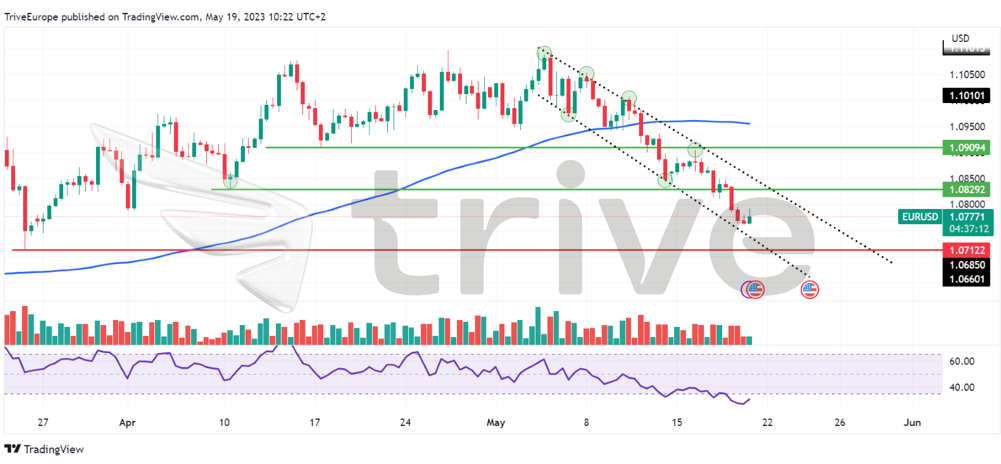The Euro is losing its grip after recently bullying the Greenback into submission for most of 2023. The EURUSD currency pair has now closed in the red for a third consecutive day, sending its week-to-date 0.72% lower to guarantee a third straight week of losses potentially.
The Greenback has found solace in a likely fix of the Debt Ceiling crisis, and now markets are seeing an appetite for the currency grow once again, further bolstered by strong April data and growing bets of a Fed rate hike. The Federal Reserve Chair, Jerome Powell, is expected to speak in the latter part of today’s trading session. Traders will be looking for cues of a potential rate hike or pause as they discern whether the Fed will support the Greenback or not. The European Central Bank’s (ECB) President Lagarde is also set to speak. The ECB has shown some commitment to supporting the Euro and reducing inflation, with more hikes expected to come.
Technical
The EURUSD currency pair’s downtrend is firmly in place as the price continues to sink within its descending channel pattern while expanding its distance from the 100-day moving average. A high volume breakout below the 1.08292 level, which acted as support before the breakout, now forms the resistance level. Support was established at the 1.07122 level from a low formed in March.
A reversal is probable, with the price now trading at the support of its descending channel pattern. Bullish traders will likely earmark the 1.08292 level as a point of interest if they take on long opportunities in substantial volumes.
Alternatively, if bearish momentum endures, the 1.07122 level could come into play before the market reassess the currency pair’s next direction.

Summary
If Fed Chair Jerome Powell’s Speech later today subtly points to more rate hikes, the Greenback could be bolstered at the expense of the Euro, leaving the 1.07122 level probable. Next week, EURUSD traders can expect preliminary PMI reports from the U.S. and Europe, along with the U.S. Core PCE Index, the Fed’s preferred inflation gauge.
Sources: Reuters, TradingView

